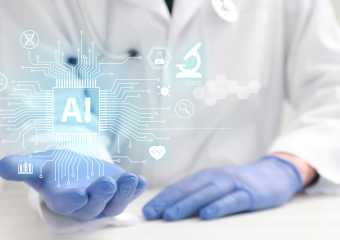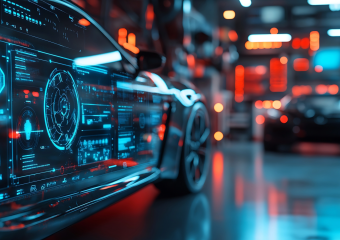Meet Your AIoT Assistant: The Rise of Intelligent Agents in Industry
AIoT, which stands for Artificial Intelligence of Things, is a pioneering technology combining artificial intelligence (AI) with the internet of things (IoT) infrastructure. This integration is transforming various industries by creating highly intelligent agents that operate with efficiency and precision. The proliferation of these AIoT agents is setting new standards in automation, data analytics, and operational intelligence, heralding a new era in industrial innovation.
Understanding AIoT and Its Industrial Applications
AIoT agents are essentially smart devices equipped with AI technology, enabling them to process data and make decisions independently. This capability is especially critical in industrial settings where precision, efficiency, and reliability are paramount. For instance, in manufacturing, AIoT devices can predict equipment failure before it happens, thus preventing downtime and saving costs. Similarly, in agriculture, these agents can analyze weather data and soil conditions to optimize planting schedules and irrigation, leading to better crop yields.
The impact of AIoT goes beyond just operational tweaks. It is redefining how industries approach problems and solutions, making processes more dynamic and responsive to the environment and market conditions. As a result, businesses are not only able to enhance their operational efficiencies but also improve safety, reduce environmental impact, and enhance customer satisfaction.
Benefits of Deploying AIoT in Industries
The integration of AI and IoT brings several benefits to the industrial sector:
- Predictive Maintenance: AIoT systems can predict when machines are likely to fail and schedule maintenance proactively. This predictive capability significantly reduces downtime and extends the life of equipment.
- Enhanced Efficiency: By automating routine tasks, AIoT agents free up human workers to focus on more complex problems. This increases overall productivity and allows companies to optimize their workforce deployment.
- Real-time Data Analysis: AIoT devices collect and analyze data in real-time, providing businesses with actionable insights more quickly. This speedy feedback loop enables quicker decision-making and more agile responses to changing conditions.
- Improved Safety: In hazardous environments like mining and manufacturing, AIoT agents can monitor conditions and predict potential safety issues, thereby enhancing worker safety and compliance with regulatory requirements.
- Energy Management: AIoT can also lead to more efficient use of resources, including energy. Smart grid applications, for example, optimize electricity use in real-time, reducing waste and lowering costs.
Key Challenges and Considerations
While the benefits are considerable, there are challenges to implementing AIoT solutions in an industrial context. Privacy and security are among the top concerns, as increased connectivity can lead to vulnerabilities in systems that might be exploited by malicious entities. Furthermore, the initial set-up and investment in AIoT technology can be high, requiring not just financial outlay but also training staff and modifying existing processes.
Another significant challenge is interoperability. With numerous devices and systems needing to communicate seamlessly, ensuring they can connect and operate together efficiently is crucial. Standardization of protocols and interfaces becomes critical in such a scenario.
Future Outlook on AIoT in Industry
The future of AIoT looks promising, with continuous advancements in AI and IoT technologies driving further integration. As 5G technology becomes more widespread, the increased network speeds and connectivity are expected to boost the capabilities of AIoT systems significantly, enabling more real-time data processing and faster responses.
Industries are likely to see even wider adoption of AIoT solutions, driven by the competitive advantages these technologies offer. As companies seek to remain relevant and competitive in an ever-evolving market, those who adopt and adeptly integrate AIoT into their operations are poised for success.
Conclusion
The combination of AI and IoT into AIoT presents a transformative opportunity for industries. By harnessing the power of intelligent agents, businesses can enhance efficiency, increase productivity, and foster innovation. As we move forward, the integration of these technologies will continue to evolve, playing a critical role in the industrial revolution of the 21st century.





